Post by Bushman on Mar 11, 2011 23:12:37 GMT
In 1882 Jack McDonald a scholar at Droop St Board School, Queen's Park, London, started a football team with the encouragement of a teacher Arthur Wrighton, known as "Johnny", with fellow school friends, brothers Joe & Harry Spurr, Fred Waller, Harry Creber, Tom Hanford and A. Allnot
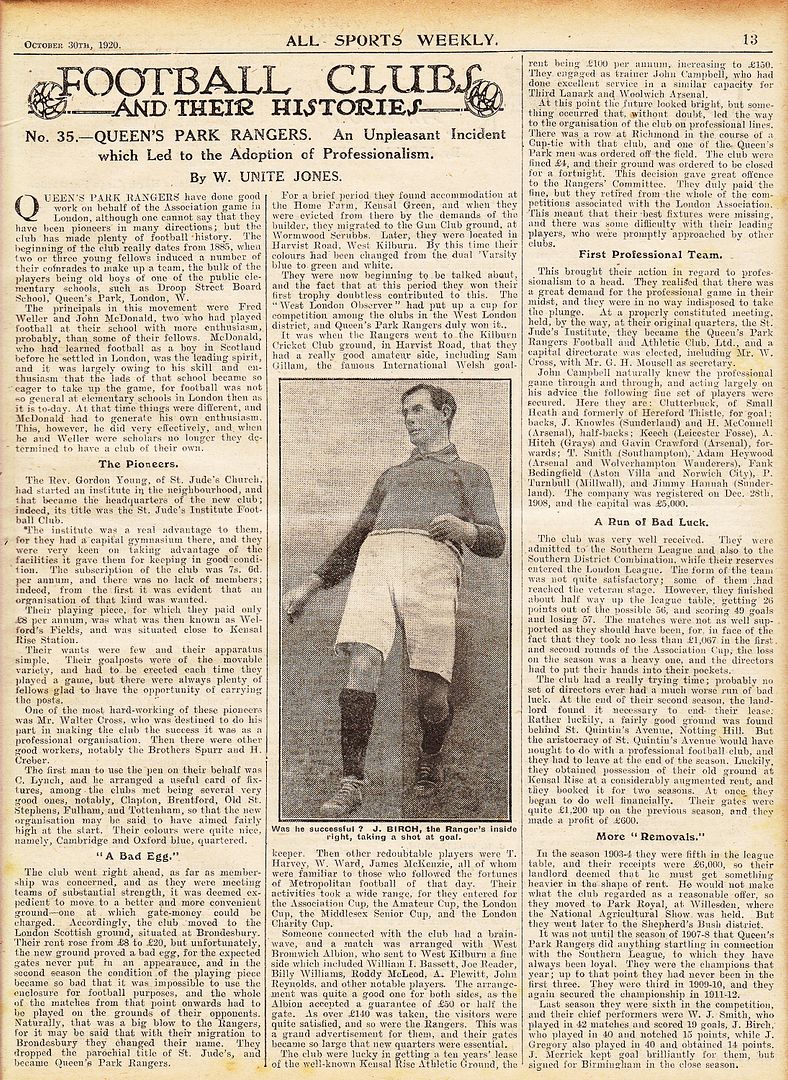
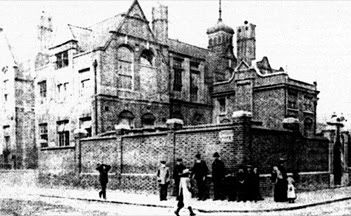
When they left Droop St Board School they joined the St Jude's Institute Football Club after St Jude's Church in Lancefield St, which became the club's headquarters. The membership subscription fee for a season was 7s. 6d. and included the use of a gymnasium.
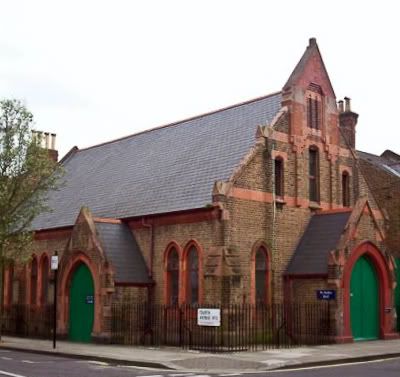
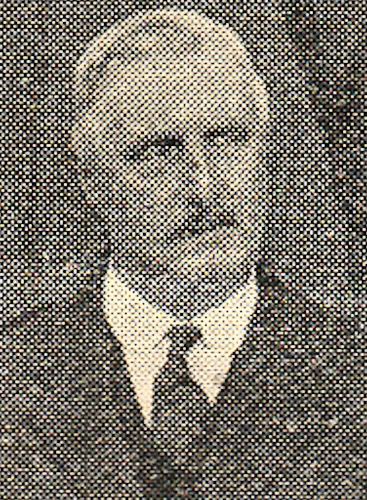
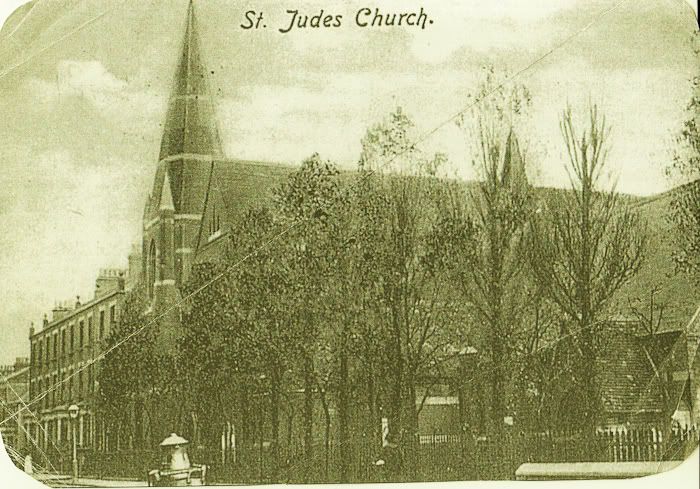
In the Spring of 1886 St Jude’s Institute FC played local rivals Christchurch Rangers in a friendly. After the match, George Wodehouse, a founder member of Christchurch Rangers, suggested on the advice of a friend that the two clubs should merge.
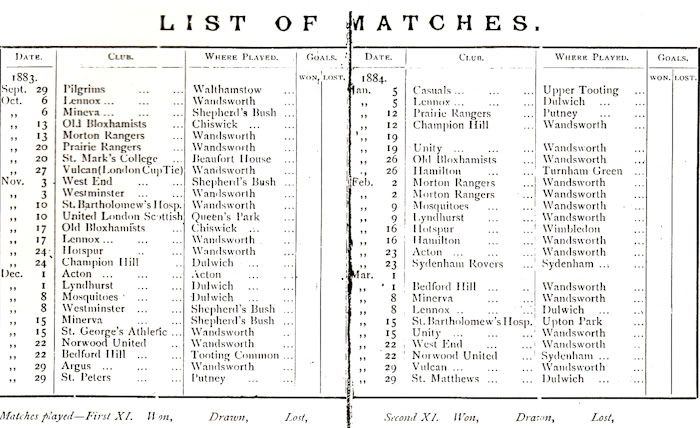
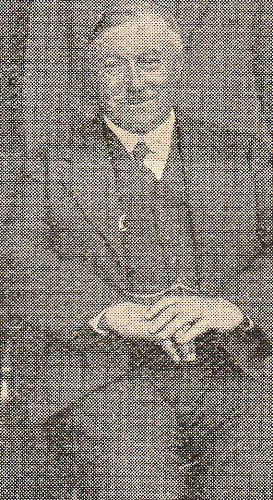
It was felt a new name acceptable to everyone had to be found.
It was E.D. Robertson who came up with the a compromise. He suggested that as most the players lived on the Queen’s Park estate, the name of the estate should be incorporated into the club’s title and that it should have the word Rangers as well to show continuity with the former ‘Christchurch Rangers FC’.
Some of the Christchurch side would not accept the change of name, they went onto form thier own team Paddington.
Sidney Bott, Vicar of St Jude’s Church allowed the newly formed Queen's Park Ranger to use the St Jude’s Institute to be used as its headquarters.
Mainly due to the unflagging zeal of one Mr Walter Cross who guided the club in the early days, later became a director of the club when the club turned professional.
The clubs first Secretary was Mr C. Lynch and the fixture list was confined to friendlies with such teams as Stanley, Tottenham, Brentford, Old St. Stephens and Clapton.
They played in Oxford and Cambridge blue halves shirts.
Their first shorts were donated by a supporter who had riding stables at Maida Vale, and who presented each player with a pair of riding pants to play their first match in.

Charles Gordon Young. Born in Oughtibridge, Sheffield in 1861.
His father was a Mining Engineer.
1881 Gordon Young with is sister Winnifred and their father are living at 71 Oakhurst Grove, Camberwell, London.
Gordon worked as a Clerk of the Surveyor of Taxes.
In 1886 Rev. Gordon Young became curate of St Jude’s Church.
He was invited to join the club at the start of the 1886-87 season and played in the position of a forward.
But it was for his calm at committee meetings that made him a very popular figure.
There is no doubt that in his two years as a curate of St Jude’s Church his steadying influence and leadership helped lay the foundation for QPR’s success in future years.
He left St Jude’s in 1888 with his wife to become Rector of Chipstead, living at 48 Chipstead Rectory, Surrey.
Rev. Gordon Young returns to London in 1901 with his wife to live at No.30 Albert Mansions, Battersea.
I'm sure he would have still been in contact with club at this stage.
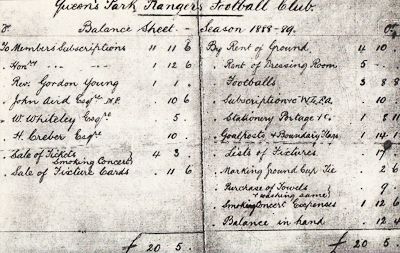
The first playing pitch was a piece of waste land near the Kensal Rise Athletic Ground.
Then followed a spell 1886–1888 at Welfords Fields owned by Welford’s Dairy behind the Case is Altered, public house to the south of Kensal Rise Station at a rent of £8 a season, here the goal posts consisted of four uprights with a tape to form the crossbar.

The club made such good progress that it was decided to secure better enclosed accommodation, and the London Scottish ground was acquired at a rental of £20 a season. This however proved a disastrous move, for the gates were very disappointing and the takings on many occasions were under 1s.6d.
The club was compelled to again seek again new pastures, and between 1890 and 1892 they had moved to Home Farm to Harvist Rd, then the Gun Club, Wormwood Scrubs and back to Kilburn Cricket ground, Harvist Rd, West Kilburn.
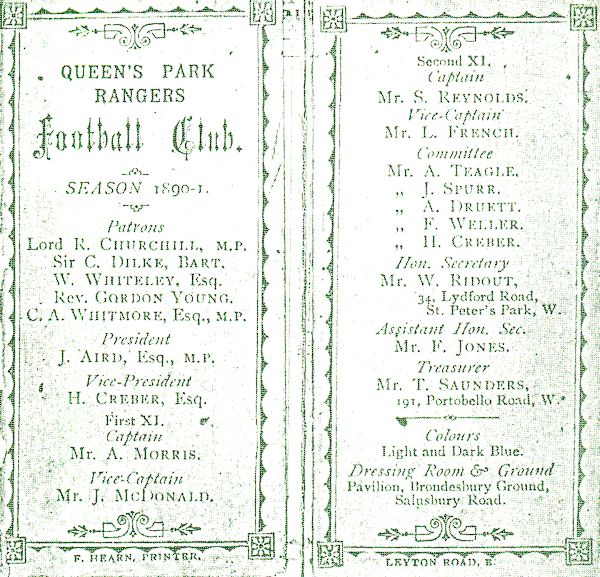
Rangers were West London Challenge Cup Finalist's in 1890-91.
In 1892 Queen's Park Rangers changed their colours to green and white hoops and joined the West London League.
They played their first match in these new colours against Paddington, the club that broke away some 6 years earlier.
Expecting a hard game over a 1000 spectators turned up. After a very rough game, which was won by Paddington 2-0, so many Rangers players were injured that they could not field a full side for the next few weeks and Queens Park Rangers refused to play the return Fixture with Paddington.
Rangers won their first trophy - the West London Observer Cup by defeating Fulham at the Kensal Rise Athletic Ground 3-2 after extra time.
Moving to the Kilburn Cricket Club in Harvist Rd, proved the turning point for the club, and with such players as W. Ward, Jimmy McKenzie, Ted Wallington, Tom Harvey, and Sam Gillam, a more ambitious programme was entered upon. Entries were made for the English Cup, Amateur Cup, London Charity Cup, and the London and Middlesex Cups.
Rangers went on to win the West London Observer Cup in 1893 and 1894 until it was handed over to the London League.
Rangers first appearance in the English Cup was in the 1894-95 season, when they drew with Old St. Stephens before a crowd of 3,000 - easily a record for the club in those days.
In 1895 Rangers won the London Cup.
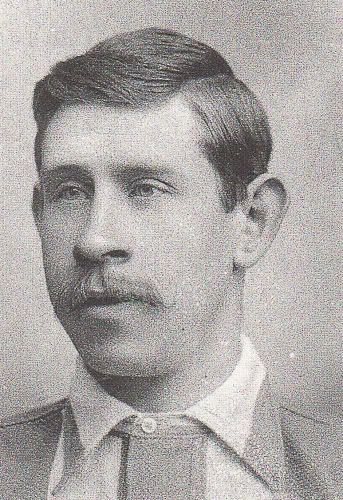
In the 1890's Rangers had some very influential patrons then were Lord Randolph Churchill, Sir Charles Dilke, M.P., John Aird, M.P., Mr C. A. Whitmore, M.P. & Mr William Whiteley.
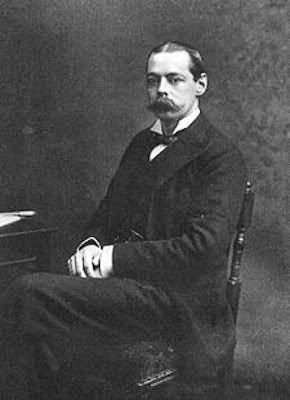
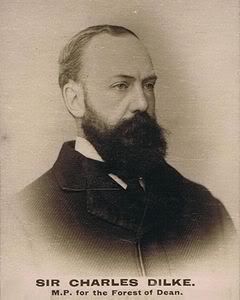

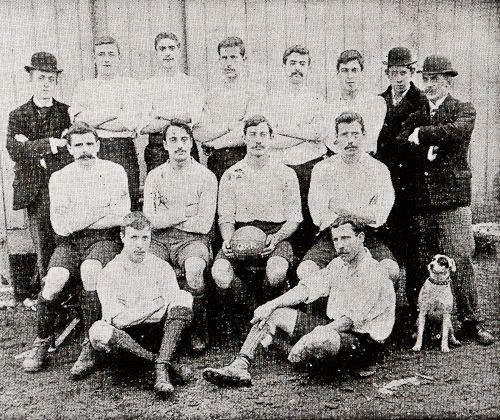
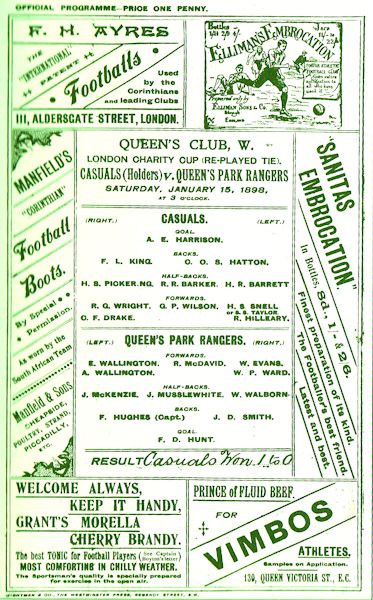
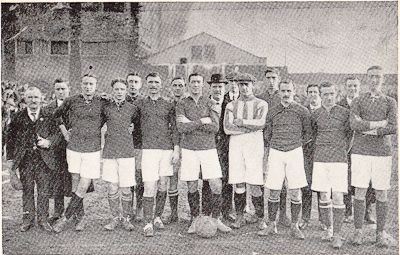
A meeting was held at St Jude's Institute , a committee was formed and a decision to adopt professionalism took place.
"Queen's Park Rangers Football and Athletic Club" became an accomplished fact.
The Company was registered on December 28th, 1898, with shares costing 10s. each.
The Directors appointed were Messrs. Arthur Lythaby, Leo Howes, A. Deverish, Walter Cross, A. Teagle, Jess Saxby, H. E. Cleverley, W. Hiscock, J. Taylor. and W. L Wood with G. H. Mousell as Secretary.
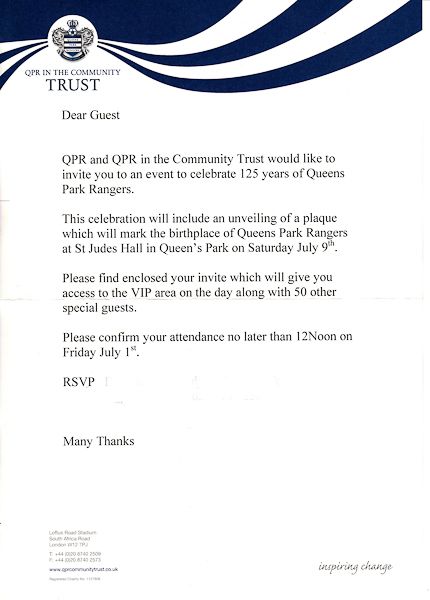
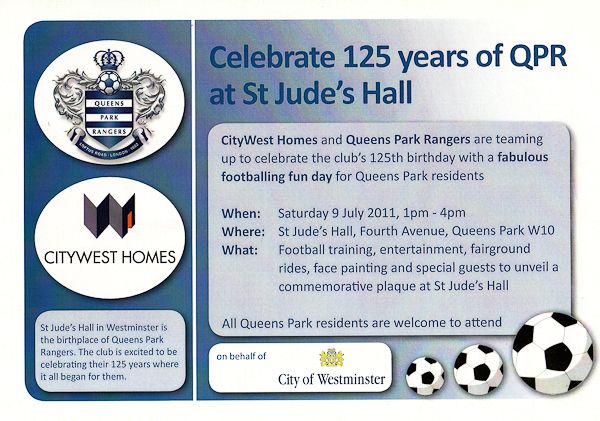
A work in progress.


Droop St Board School
St Jude's Institute
When they left Droop St Board School they joined the St Jude's Institute Football Club after St Jude's Church in Lancefield St, which became the club's headquarters. The membership subscription fee for a season was 7s. 6d. and included the use of a gymnasium.

Bert Pearsall was already a member of the club, having been at Droop St Board School in 1880. He went on to become Vice-Chairman of QPR until his death on the 9th August 1946.

Albert Edward Pearsall

In the Spring of 1886 St Jude’s Institute FC played local rivals Christchurch Rangers in a friendly. After the match, George Wodehouse, a founder member of Christchurch Rangers, suggested on the advice of a friend that the two clubs should merge.

Christ Church Rangers Fixture List
George Wodehouse went on to become a director of QPR until his death in 1947.

George J. Wodehouse
It was felt a new name acceptable to everyone had to be found.
It was E.D. Robertson who came up with the a compromise. He suggested that as most the players lived on the Queen’s Park estate, the name of the estate should be incorporated into the club’s title and that it should have the word Rangers as well to show continuity with the former ‘Christchurch Rangers FC’.
Some of the Christchurch side would not accept the change of name, they went onto form thier own team Paddington.
Sidney Bott, Vicar of St Jude’s Church allowed the newly formed Queen's Park Ranger to use the St Jude’s Institute to be used as its headquarters.
Mainly due to the unflagging zeal of one Mr Walter Cross who guided the club in the early days, later became a director of the club when the club turned professional.
The clubs first Secretary was Mr C. Lynch and the fixture list was confined to friendlies with such teams as Stanley, Tottenham, Brentford, Old St. Stephens and Clapton.
They played in Oxford and Cambridge blue halves shirts.
Their first shorts were donated by a supporter who had riding stables at Maida Vale, and who presented each player with a pair of riding pants to play their first match in.

Queen's Park Rangers 1886
Charles Gordon Young. Born in Oughtibridge, Sheffield in 1861.
His father was a Mining Engineer.
1881 Gordon Young with is sister Winnifred and their father are living at 71 Oakhurst Grove, Camberwell, London.
Gordon worked as a Clerk of the Surveyor of Taxes.
In 1886 Rev. Gordon Young became curate of St Jude’s Church.
He was invited to join the club at the start of the 1886-87 season and played in the position of a forward.
But it was for his calm at committee meetings that made him a very popular figure.
There is no doubt that in his two years as a curate of St Jude’s Church his steadying influence and leadership helped lay the foundation for QPR’s success in future years.
He left St Jude’s in 1888 with his wife to become Rector of Chipstead, living at 48 Chipstead Rectory, Surrey.
Rev. Gordon Young returns to London in 1901 with his wife to live at No.30 Albert Mansions, Battersea.
I'm sure he would have still been in contact with club at this stage.

Balance Sheet for 1888-89 season, by the first club secretary Mr C . Lynch
The first playing pitch was a piece of waste land near the Kensal Rise Athletic Ground.
Then followed a spell 1886–1888 at Welfords Fields owned by Welford’s Dairy behind the Case is Altered, public house to the south of Kensal Rise Station at a rent of £8 a season, here the goal posts consisted of four uprights with a tape to form the crossbar.

Case is Altered
The club made such good progress that it was decided to secure better enclosed accommodation, and the London Scottish ground was acquired at a rental of £20 a season. This however proved a disastrous move, for the gates were very disappointing and the takings on many occasions were under 1s.6d.
The club was compelled to again seek again new pastures, and between 1890 and 1892 they had moved to Home Farm to Harvist Rd, then the Gun Club, Wormwood Scrubs and back to Kilburn Cricket ground, Harvist Rd, West Kilburn.

Rangers were West London Challenge Cup Finalist's in 1890-91.
In 1892 Queen's Park Rangers changed their colours to green and white hoops and joined the West London League.
They played their first match in these new colours against Paddington, the club that broke away some 6 years earlier.
Expecting a hard game over a 1000 spectators turned up. After a very rough game, which was won by Paddington 2-0, so many Rangers players were injured that they could not field a full side for the next few weeks and Queens Park Rangers refused to play the return Fixture with Paddington.
Rangers won their first trophy - the West London Observer Cup by defeating Fulham at the Kensal Rise Athletic Ground 3-2 after extra time.
Moving to the Kilburn Cricket Club in Harvist Rd, proved the turning point for the club, and with such players as W. Ward, Jimmy McKenzie, Ted Wallington, Tom Harvey, and Sam Gillam, a more ambitious programme was entered upon. Entries were made for the English Cup, Amateur Cup, London Charity Cup, and the London and Middlesex Cups.
Rangers went on to win the West London Observer Cup in 1893 and 1894 until it was handed over to the London League.
Rangers first appearance in the English Cup was in the 1894-95 season, when they drew with Old St. Stephens before a crowd of 3,000 - easily a record for the club in those days.
In 1895 Rangers won the London Cup.

John Musslewhite captained the side from 1896-1899.
He stood down from the first team in 1899 when Rangers joined the Southern League and became a professional outfit.
He continued to play as an amatuer for the reseves as team captain. In 1902 he gained a representative honour playing for the London League.
He stood down from the first team in 1899 when Rangers joined the Southern League and became a professional outfit.
He continued to play as an amatuer for the reseves as team captain. In 1902 he gained a representative honour playing for the London League.
In the 1890's Rangers had some very influential patrons then were Lord Randolph Churchill, Sir Charles Dilke, M.P., John Aird, M.P., Mr C. A. Whitmore, M.P. & Mr William Whiteley.

Lord Randolph Churchill father of Sir Winston Churchill.

Sir Charles Dilke M.P.

William Whiteley founder of Whiteleys Department Store, Bayswater, London.

Queen's Park Rangers 1897
1897-98 Rangers won their first FA Cup tie, they beat Windsor & Eton 3-0 at home.

1898 Rangers acquire a ten-years lease of the Kensal Rise
Athletic Ground.
Athletic Ground.

Queen's Park Rangers Team picture 1898-99 season
A meeting was held at St Jude's Institute , a committee was formed and a decision to adopt professionalism took place.
"Queen's Park Rangers Football and Athletic Club" became an accomplished fact.
The Company was registered on December 28th, 1898, with shares costing 10s. each.
The Directors appointed were Messrs. Arthur Lythaby, Leo Howes, A. Deverish, Walter Cross, A. Teagle, Jess Saxby, H. E. Cleverley, W. Hiscock, J. Taylor. and W. L Wood with G. H. Mousell as Secretary.


A work in progress.



